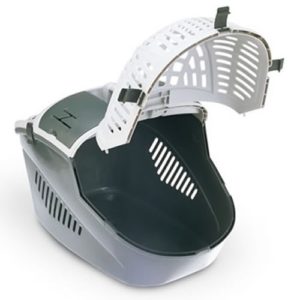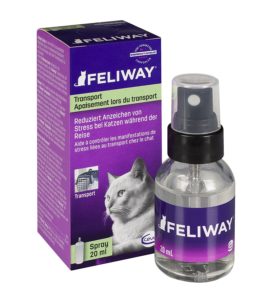Safety First When Visiting the Vet

A cautionary tail: Never put your cat’s carrier on the front seat of your vehicle where it can be crushed and your pet killed by deploying air bags in the case of abrupt braking or an actual collision.
That said, have you ever wondered why, despite there being more cats than dogs in American households, they visit the vet far less frequently than their canine counterparts.
Studies have shown that our prescient pusses can SENSE what’s coming and that they both dread and detest the entire process of GETTING to the vet. Some kitties become so stressed that they vomit or defecate out of fear while others morph into hissing, spitting balls of fury.
Since annual (twice a year for seniors) wellness exams are essential for monitoring and maintaining your cherished companion’s health, consider the following tips for making the experience of visiting the vet as fear free for your feline as paws-ible.
- Bring out your kitty’s carrier several days before your scheduled vet appointment so that she can get used to the sight of it. Leave the door open, thereby allowing her to enter it, explore it and exit it at her leisure.
- Place some of her favorite treats and/or some catnip inside the carrier to encourage her to associate the carrier with a pleasant and positive experience.
- Make the carrier appear less threatening and more inviting by lining it with one of her blankets topped by several of her favorite toys.
- Spray the interior of the carrier with a synthetic feline pheromone product reputed to decrease and even eliminate stress 30 minutes before using it, then gently put your kitty inside and softly close the door.
- Place the carrier in a secure place on the back seat of your car. This way, should you have to stop suddenly, your cat will remain safe. To be doubly certain, choose a carrier that’s easily and securely fastened in place with a seatbelt.
- Practice making mock trips to the vet by driving around the block. Once … twice three times … increasing your driving time as long as kitty seems comfortable, and stopping if she shows any signs of distress. For most cats, the only time they’re crated and inside a car is when they’re going to the vet, setting the stage for a stressful encounter once they arrive. This exercise will hopefully de-sensitize your cat, preparing her for “the real thing”, and rewarding her with especially high-value treats should assist in her associating the drive with something pleasurable.
- If none of this helps and your kitty remains stressed both by the drive to the vet and by the visit itself, ask your vet to prescribe a sedative to calm her down for any and all future visits.



